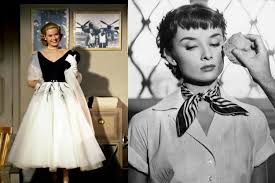Elegant and Stylish Professional Outfits for Women: A Guide to Power Dressing
Professional Outfits for Women
In the professional world, dressing appropriately can make a significant impact on how you are perceived. For women, choosing the right outfits that exude confidence, competence, and style is essential. Here are some tips on putting together professional outfits that command respect while showcasing your personal style:
Tailored Suits
A well-fitted suit is a timeless classic that never goes out of style. Opt for tailored blazers and trousers in neutral colours like black, navy, or grey for a polished look. Pair it with a crisp white shirt or a silk blouse for a sophisticated touch.
Pencil Skirts
Pencil skirts are versatile pieces that can be dressed up or down depending on the occasion. Choose skirts that hit just above or at the knee for a professional look. Pair them with a blouse or a tailored top for a chic ensemble.
Shift Dresses
A well-tailored shift dress is an effortless choice for professional settings. Opt for classic styles in solid colours or subtle patterns. Accessorise with statement jewellery and heels to elevate your look.
Blouses and Trousers
Blouses paired with tailored trousers offer a sophisticated alternative to suits. Choose blouses in luxurious fabrics like silk or chiffon and pair them with well-fitted trousers in complementary colours.
Accessories
Accessories play a crucial role in completing your professional outfit. Opt for minimalistic jewellery, such as stud earrings or delicate necklaces, to add a touch of elegance without overpowering your look.
Remember, confidence is key when it comes to dressing professionally. Choose outfits that make you feel comfortable and empowered so you can focus on excelling in your career with style and grace.
Essential Guidelines for Women’s Professional Attire: Styling, Skirt Length, Wardrobe Essentials, and Accessorising Tips
- What is considered appropriate professional attire for women?
- How can I style a tailored suit for a professional look?
- Are there any guidelines for choosing the right length of a skirt for the workplace?
- What are some essential pieces to have in a professional wardrobe?
- How can I accessorise my professional outfit without being too flashy?
What is considered appropriate professional attire for women?
When it comes to appropriate professional attire for women, the key is to strike a balance between professionalism and personal style. In general, tailored suits, pencil skirts, shift dresses, blouses paired with trousers, and smart accessories are considered staples of a professional wardrobe. Opt for well-fitted clothing in neutral colours or subtle patterns to convey a sense of competence and sophistication. It’s important to dress in a way that makes you feel confident and comfortable while adhering to the dress code of your workplace. Ultimately, appropriate professional attire for women should reflect professionalism, confidence, and individuality in equal measure.
How can I style a tailored suit for a professional look?
When it comes to styling a tailored suit for a professional look, attention to detail is key. Start by choosing a well-fitted suit in a classic colour like black, navy, or grey. Ensure that the jacket sits comfortably on your shoulders and the trousers are the right length. Pair the suit with a crisp white shirt or a silk blouse for a polished finish. Consider adding subtle accessories such as a statement watch or elegant heels to elevate your outfit. Remember to exude confidence and carry yourself with poise to complete the professional look with style and sophistication.
Are there any guidelines for choosing the right length of a skirt for the workplace?
When it comes to choosing the right length of a skirt for the workplace, there are some general guidelines to keep in mind. The most commonly accepted rule is that skirts should hit at or just above the knee for a professional look. This length is considered appropriate in most work environments as it strikes a balance between being stylish and conservative. It’s important to avoid skirts that are too short, as they can be distracting and may not convey a professional image. Ultimately, the goal is to choose a skirt length that allows you to feel confident and comfortable while maintaining a polished appearance in the workplace.
What are some essential pieces to have in a professional wardrobe?
When it comes to building a professional wardrobe, certain key pieces are essential for creating versatile and polished looks. A well-tailored suit, comprising a blazer and trousers in classic colours like black or navy, is a must-have staple. Pencil skirts that hit just above or at the knee offer a sophisticated option for mixing and matching with various tops. Shift dresses in timeless styles can effortlessly transition from office meetings to after-work events. Blouses in luxurious fabrics paired with tailored trousers provide an elegant alternative to traditional suits. Accessorising with minimalistic jewellery adds a touch of sophistication to complete the professional ensemble. By incorporating these essential pieces into your wardrobe, you can create a range of chic and professional outfits that exude confidence and style in any work setting.
How can I accessorise my professional outfit without being too flashy?
When it comes to accessorising a professional outfit without being too flashy, the key is to opt for subtle and sophisticated pieces that complement your look rather than overpower it. Consider incorporating understated accessories such as dainty jewellery like stud earrings, delicate necklaces, or a simple watch. A classic leather handbag or a structured tote can also add a touch of elegance without drawing too much attention. Remember, less is often more when it comes to accessorising in a professional setting, so choose quality over quantity and let your confidence shine through your outfit choices.

